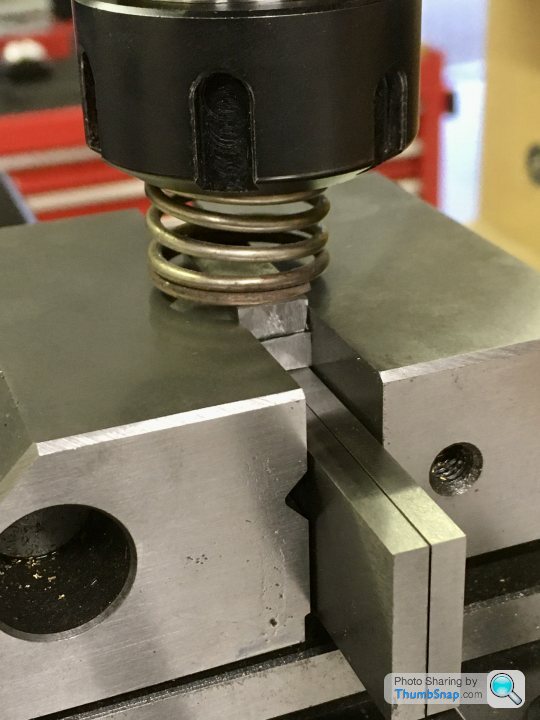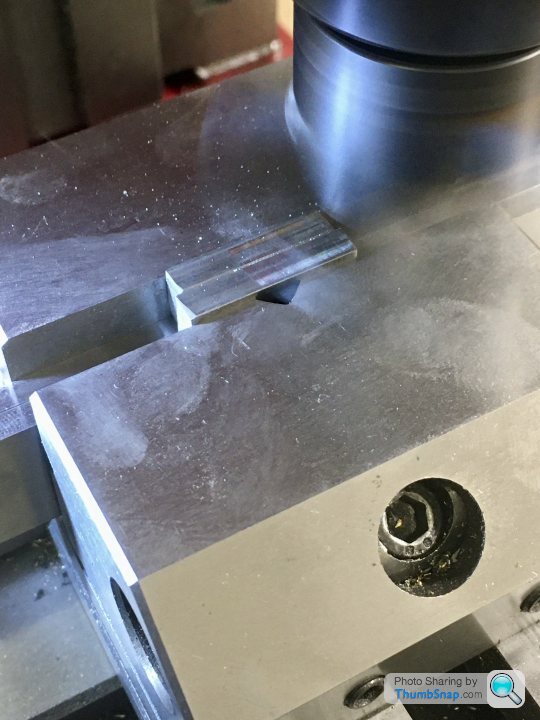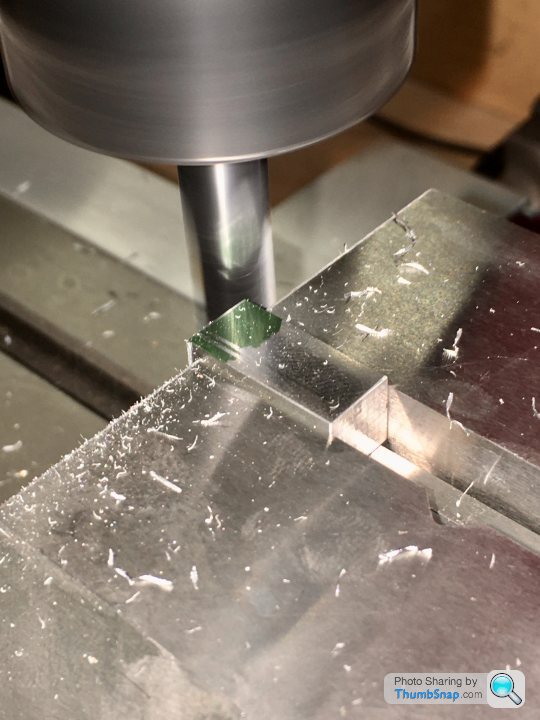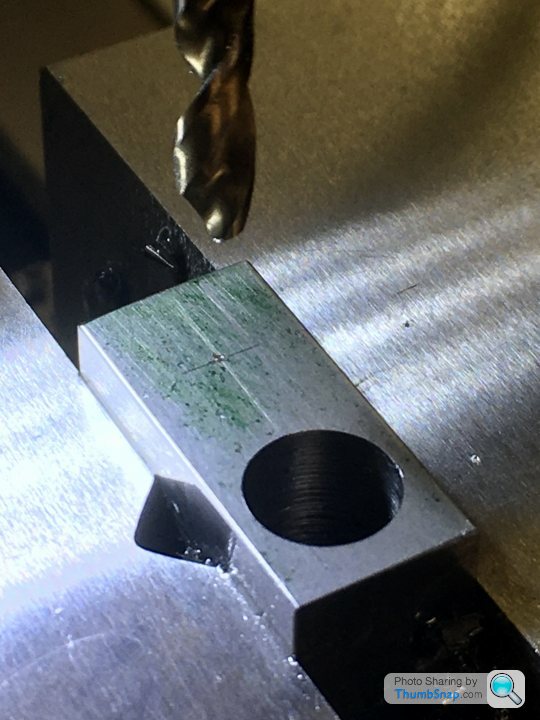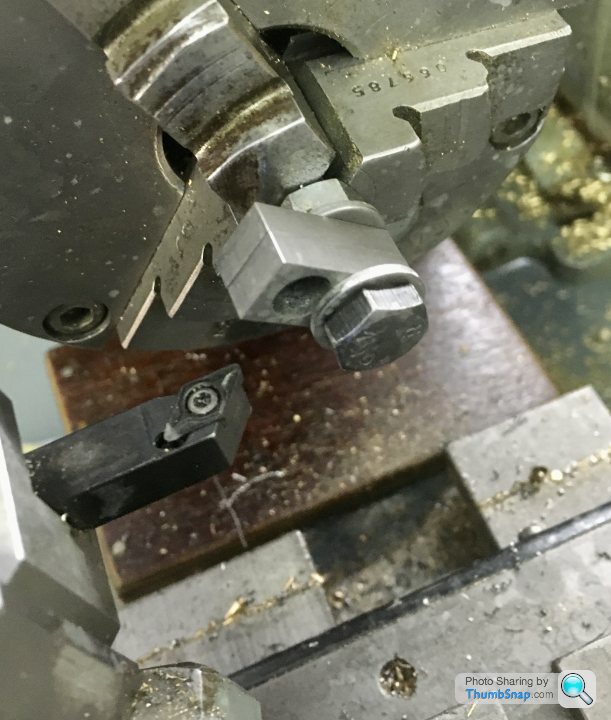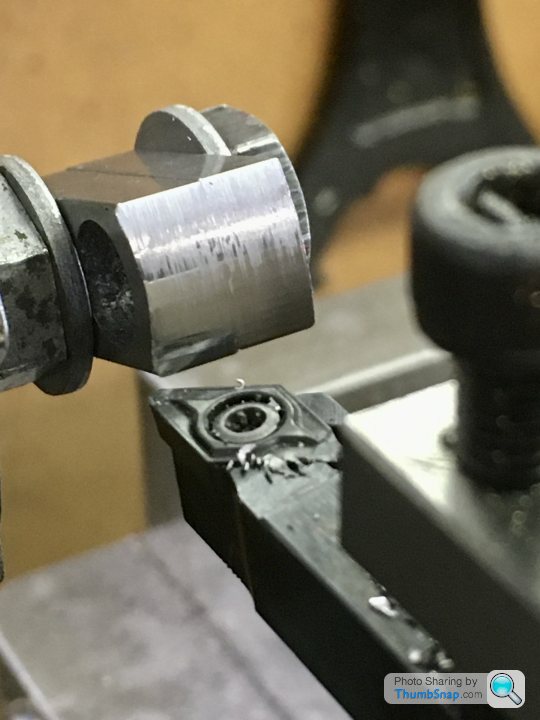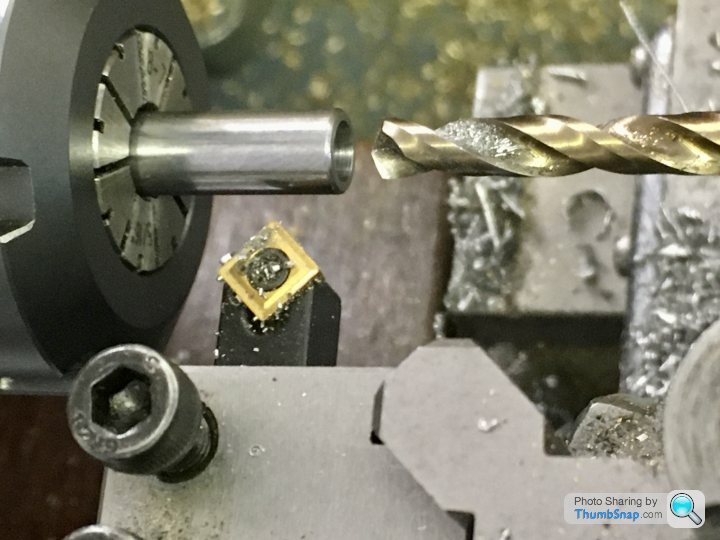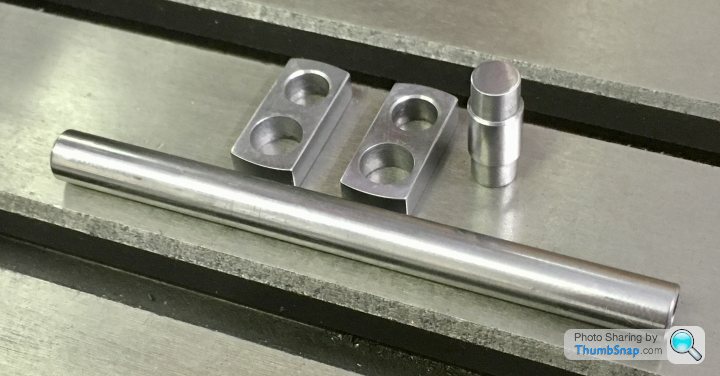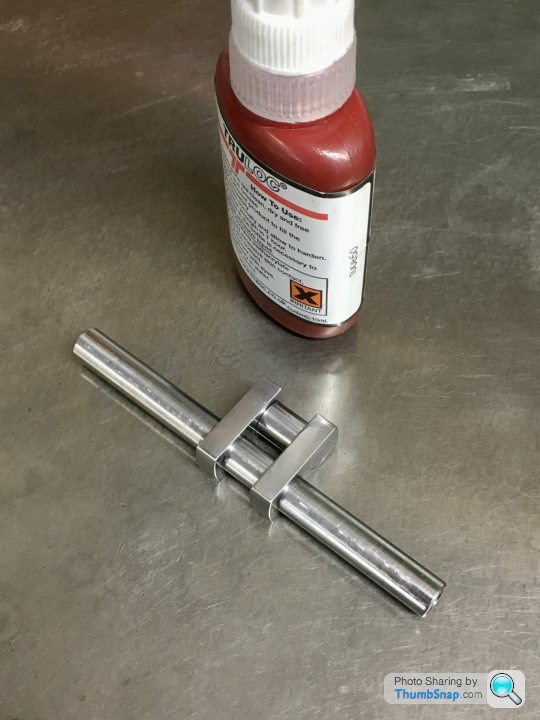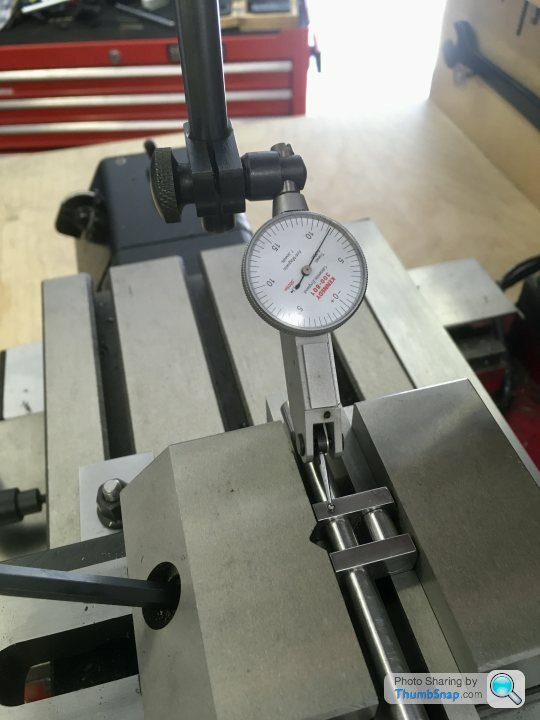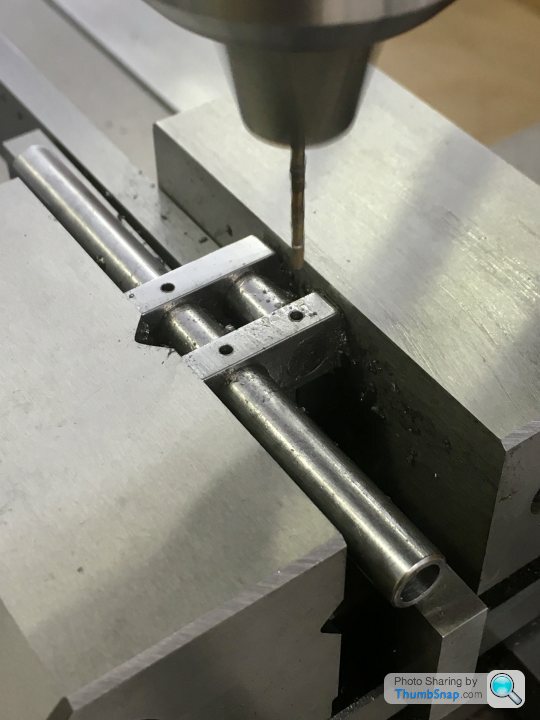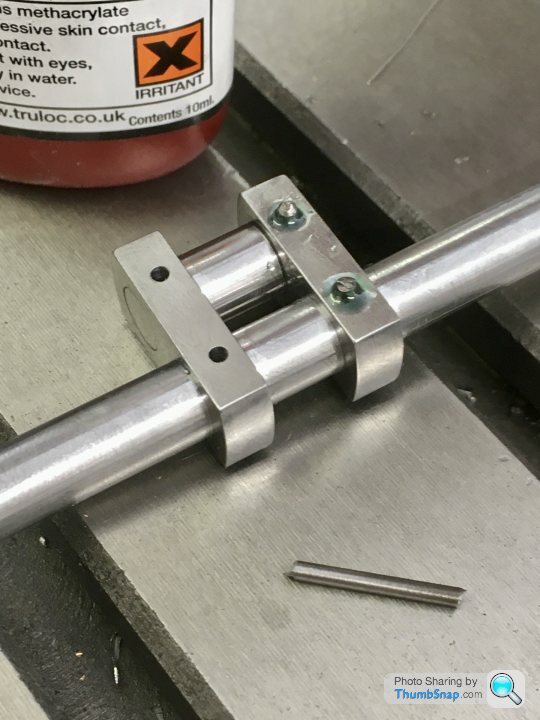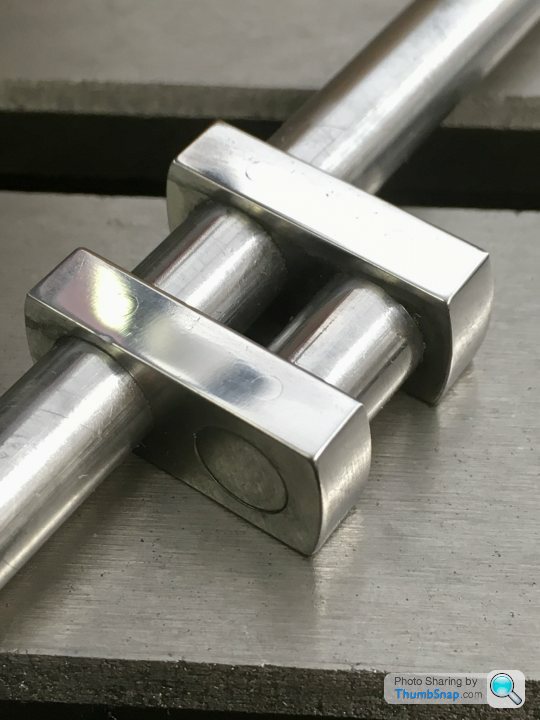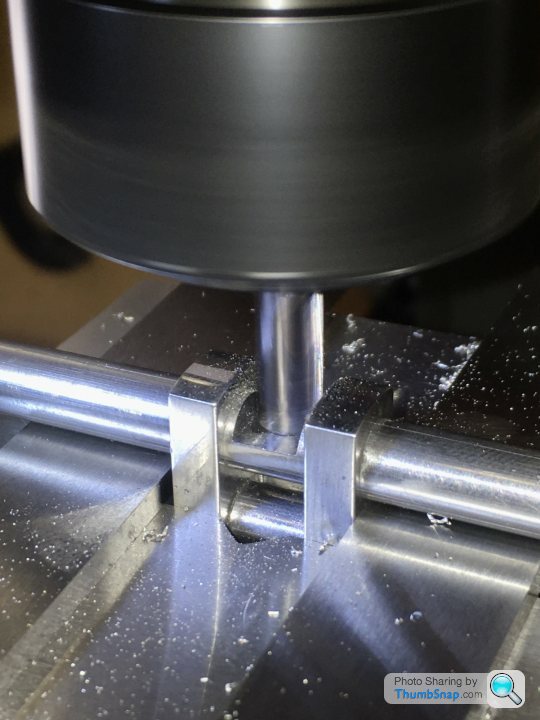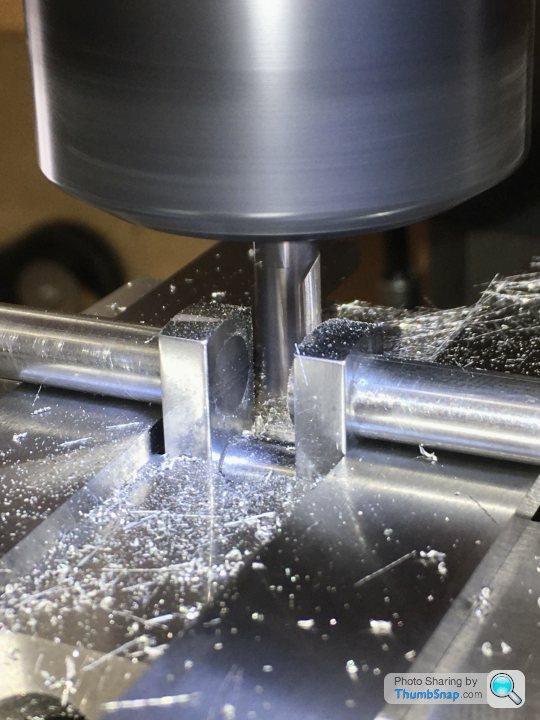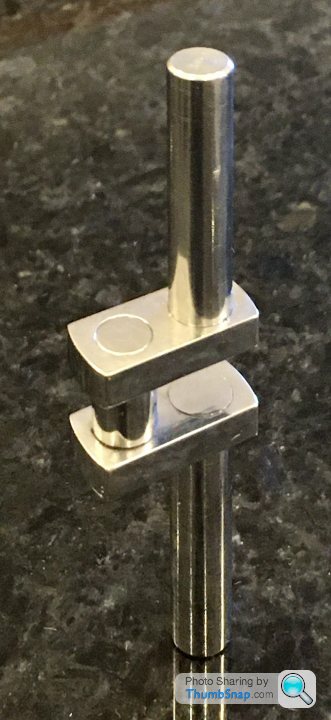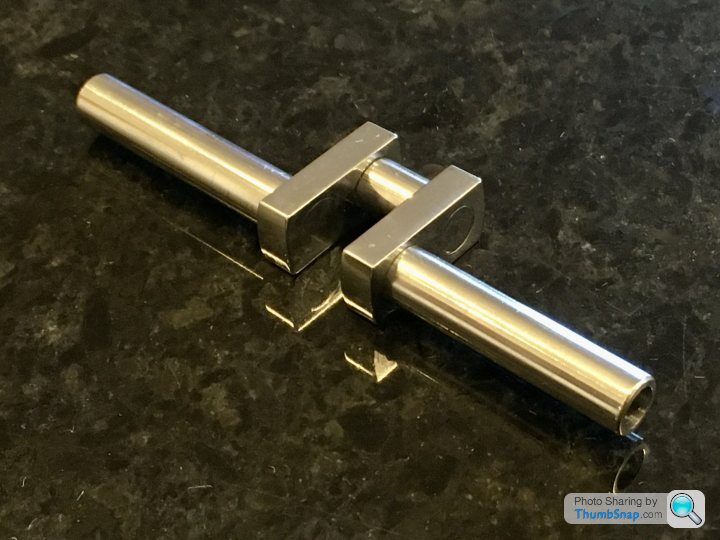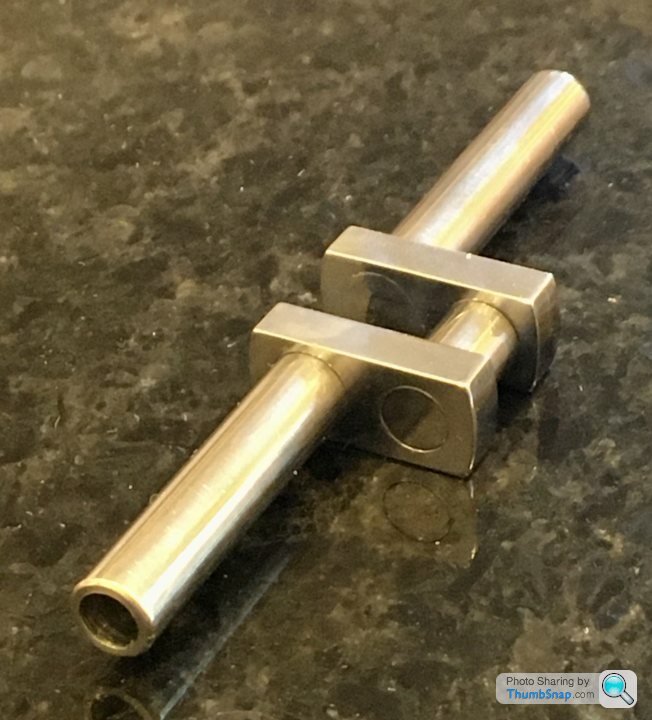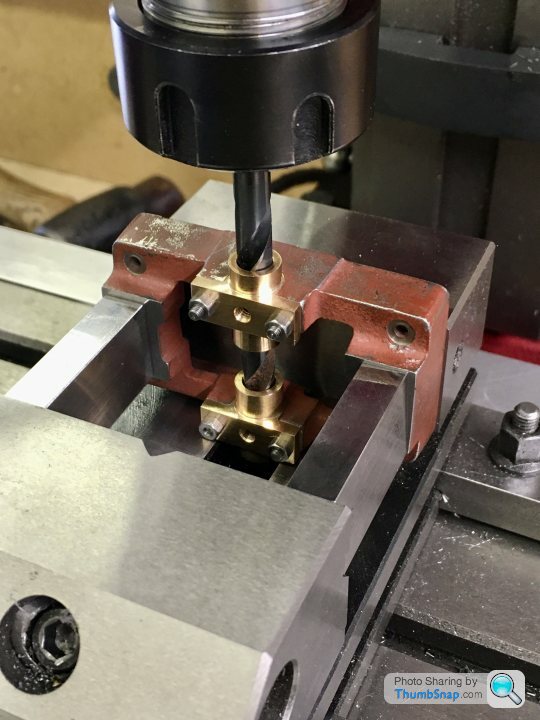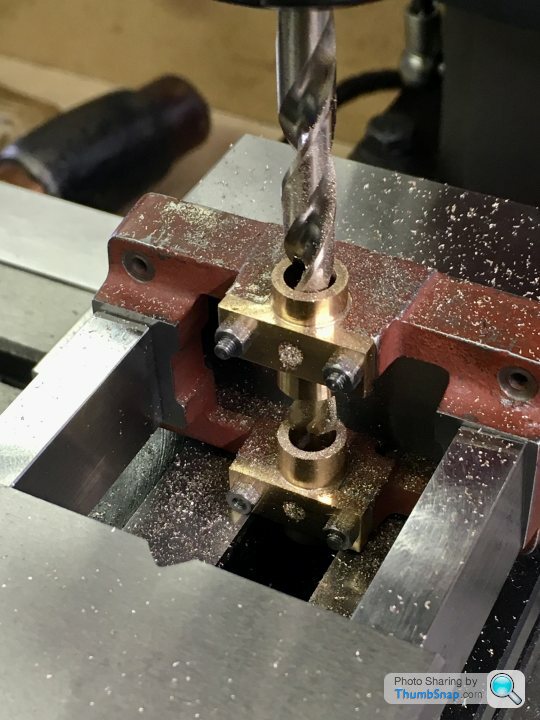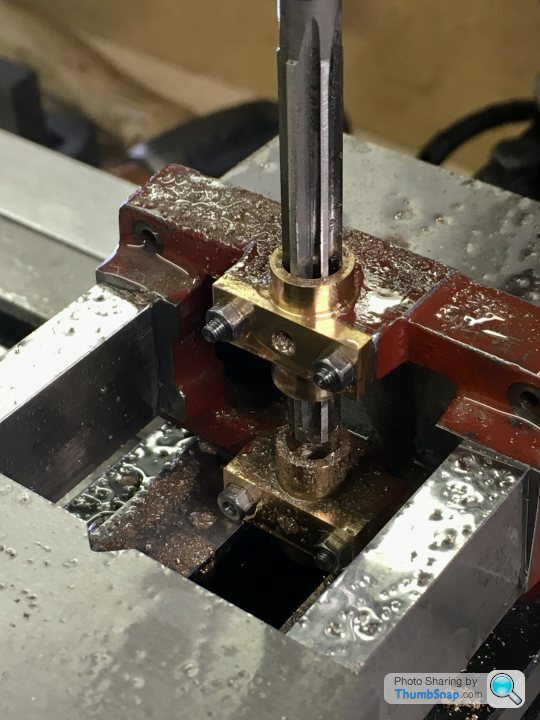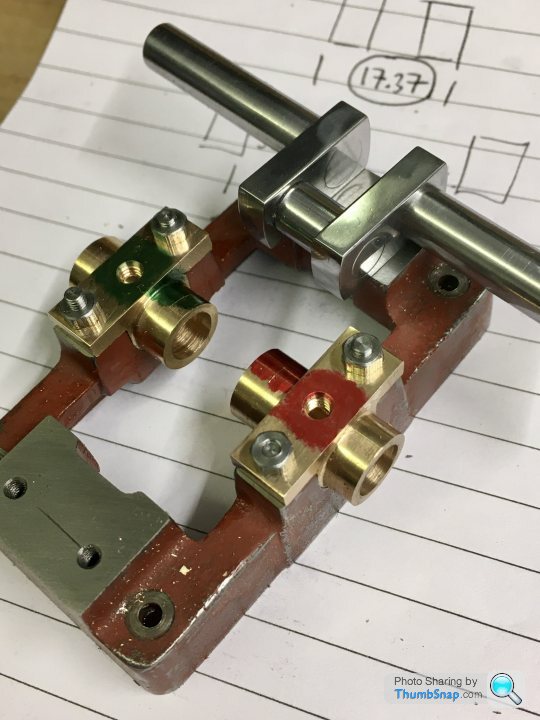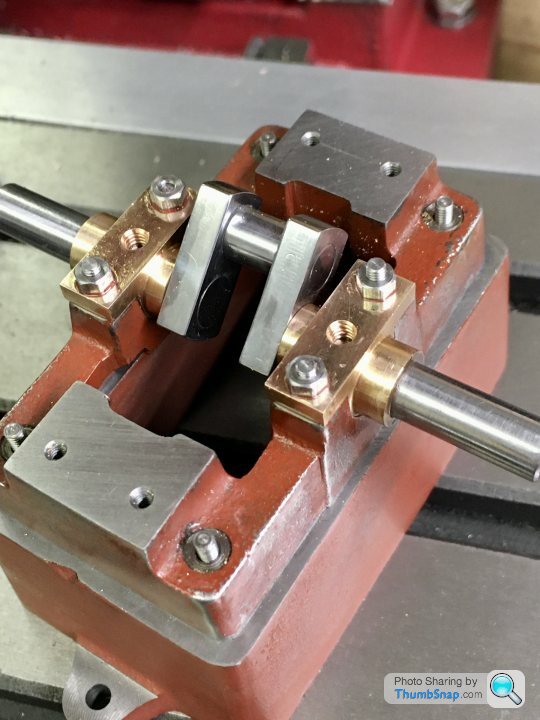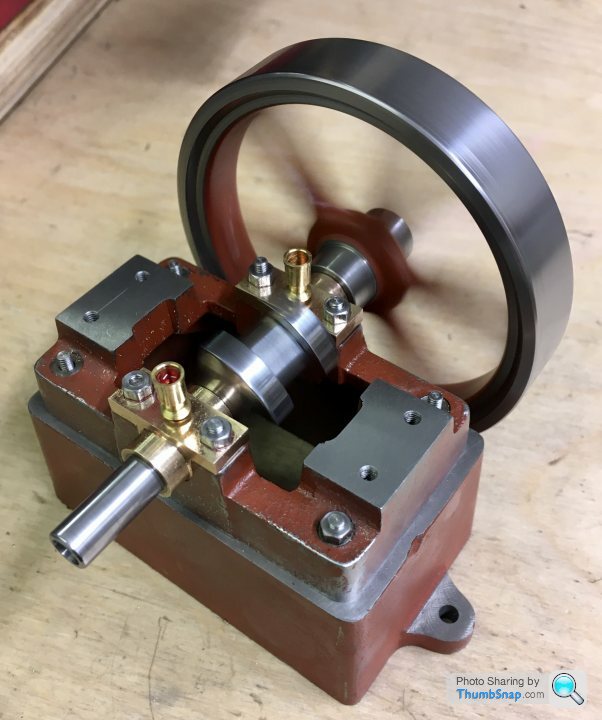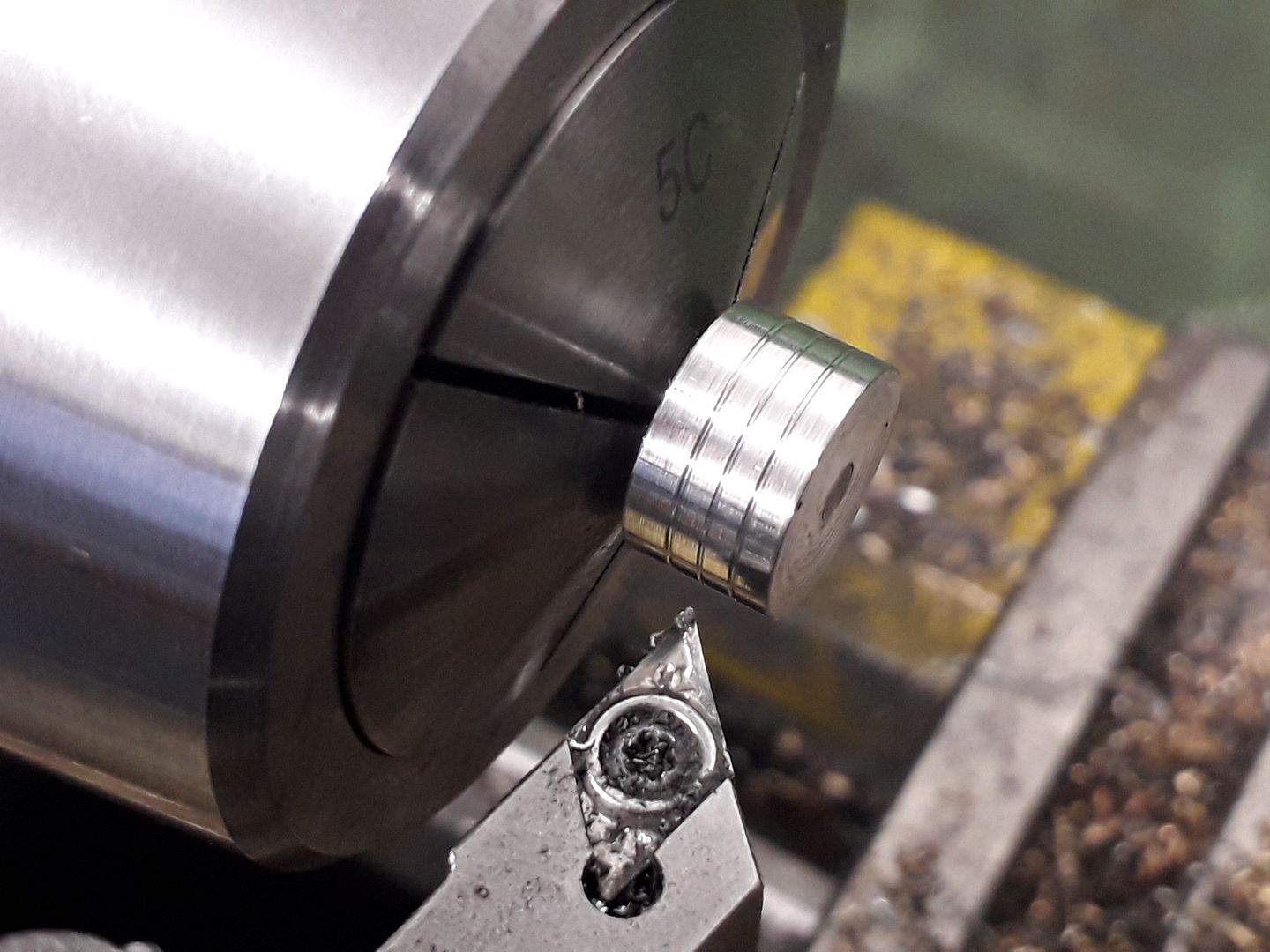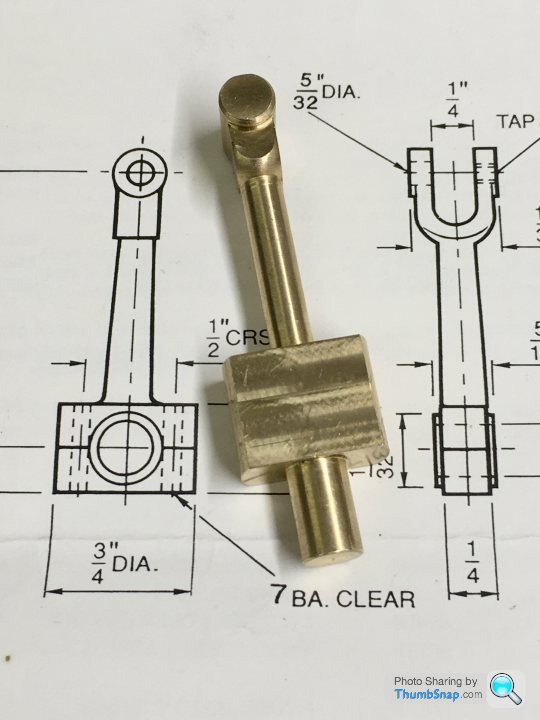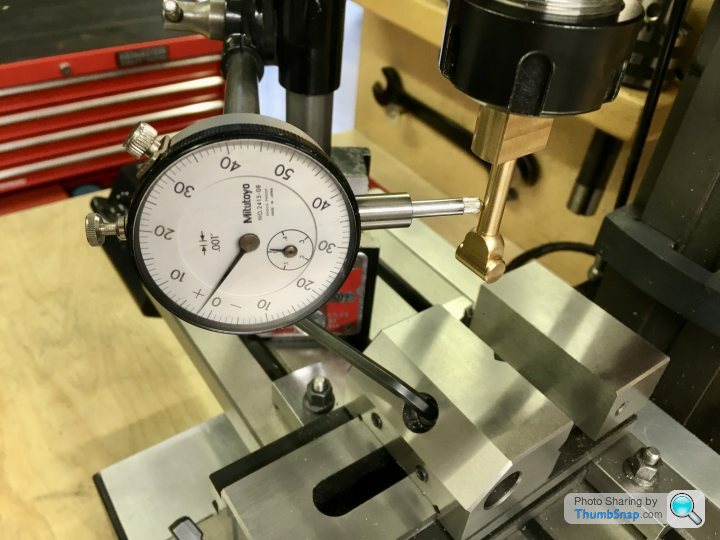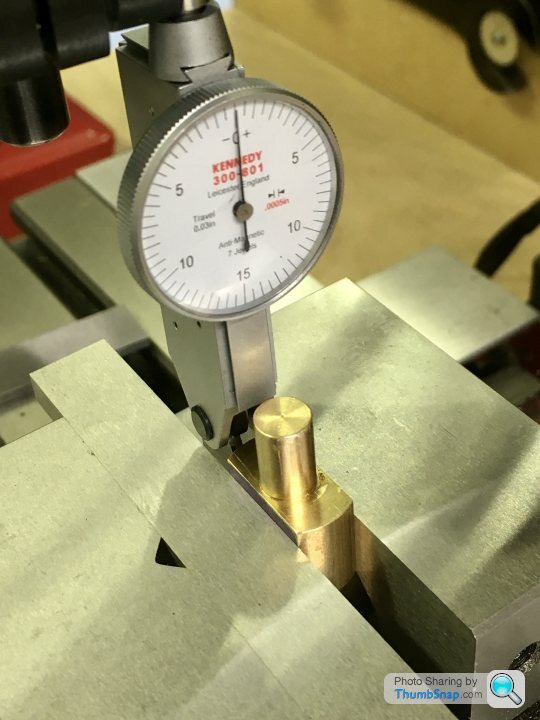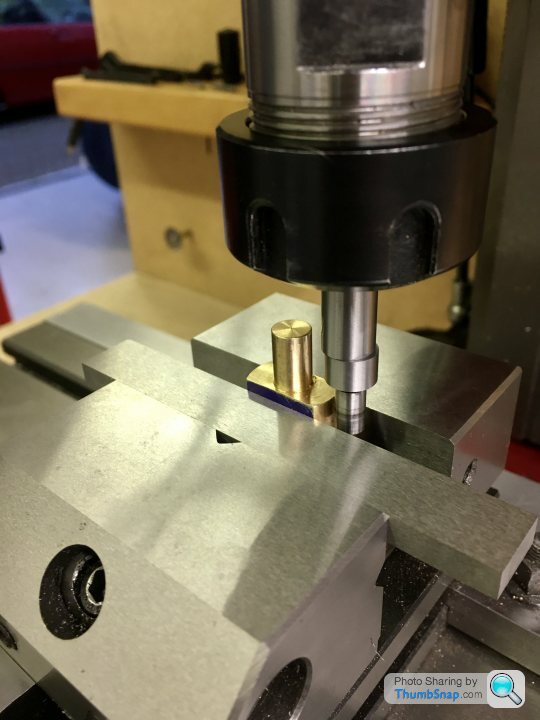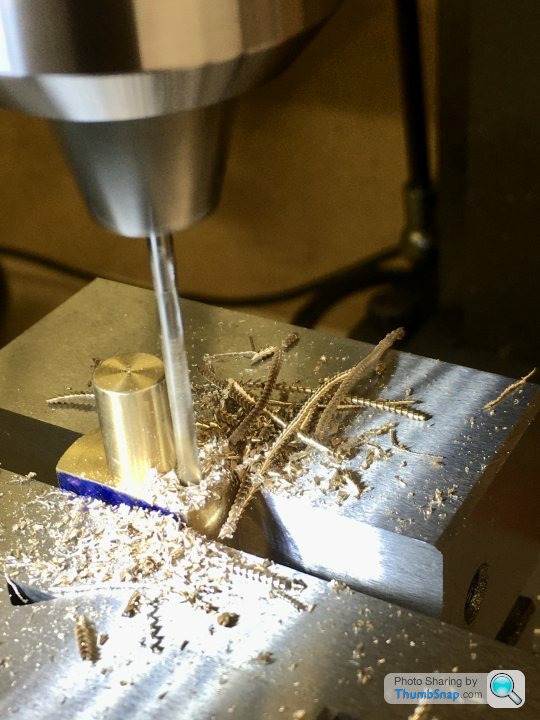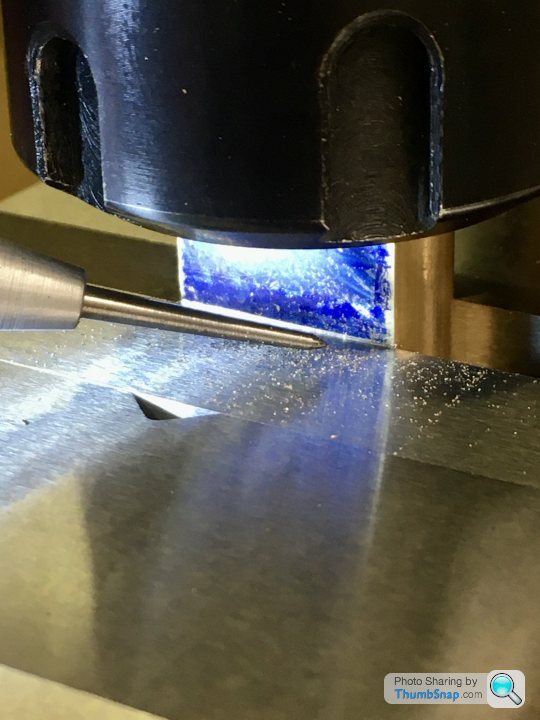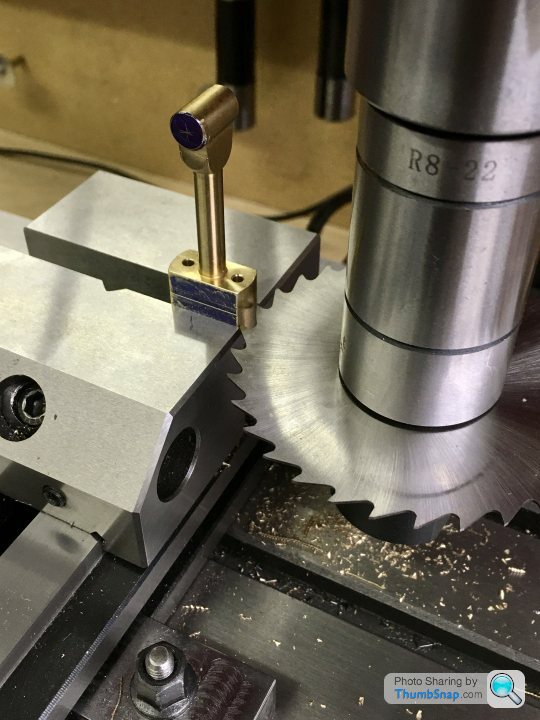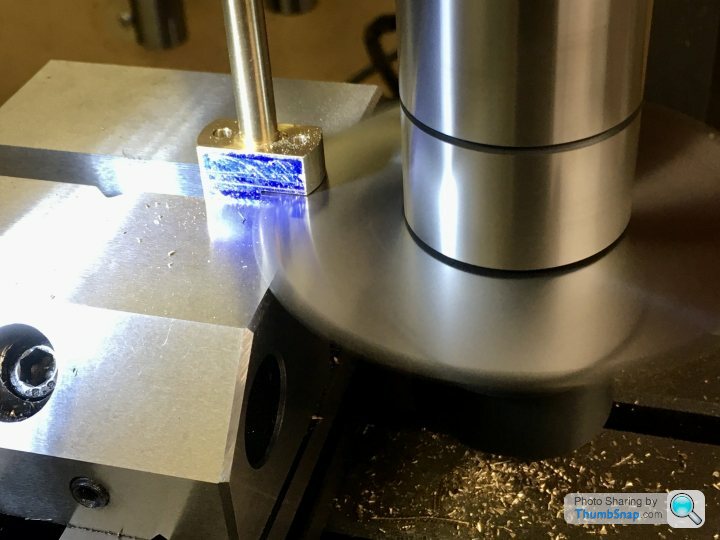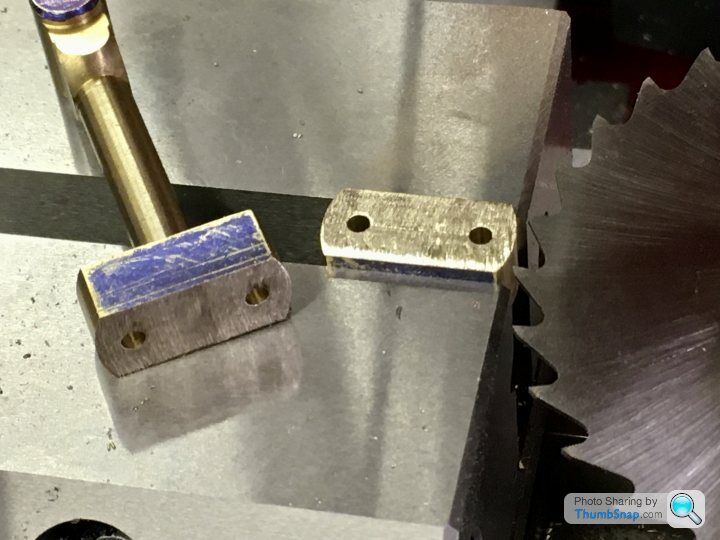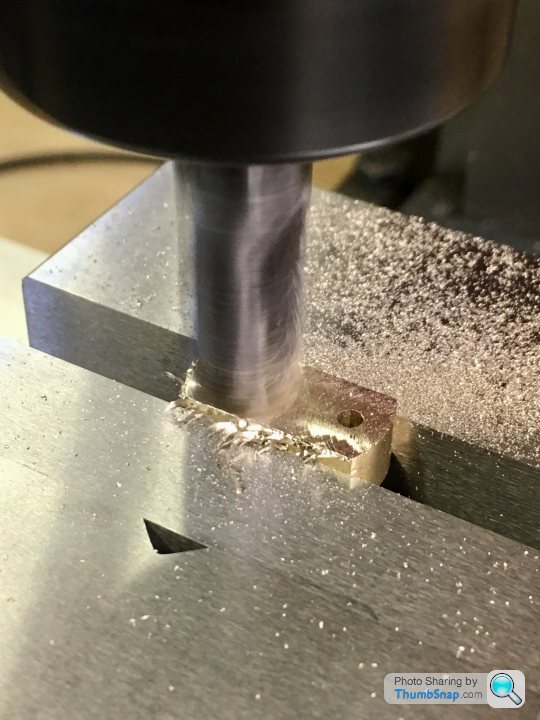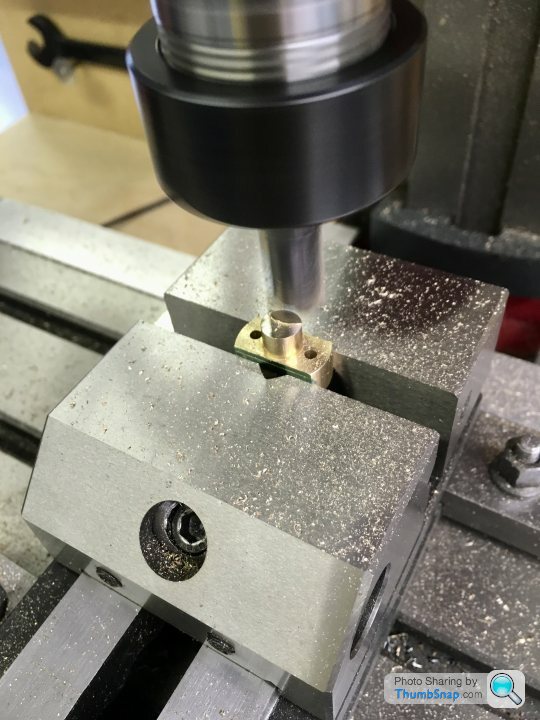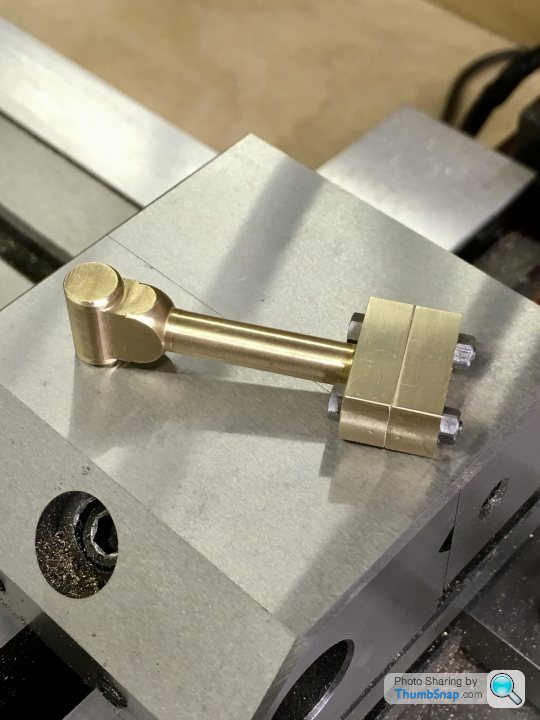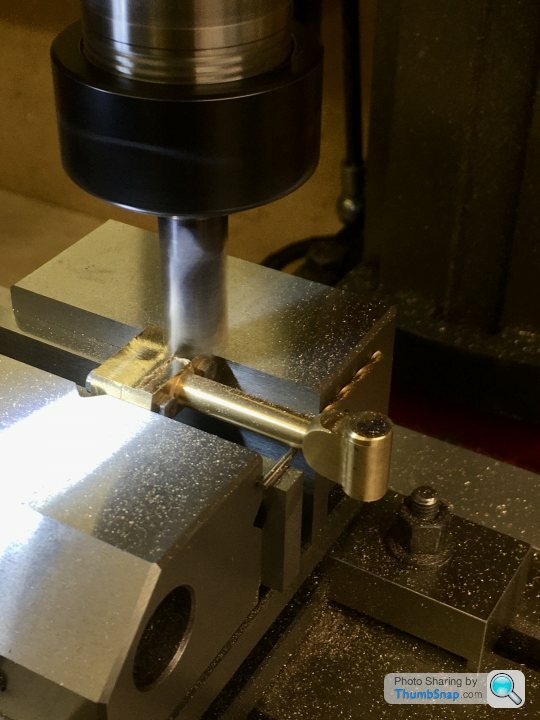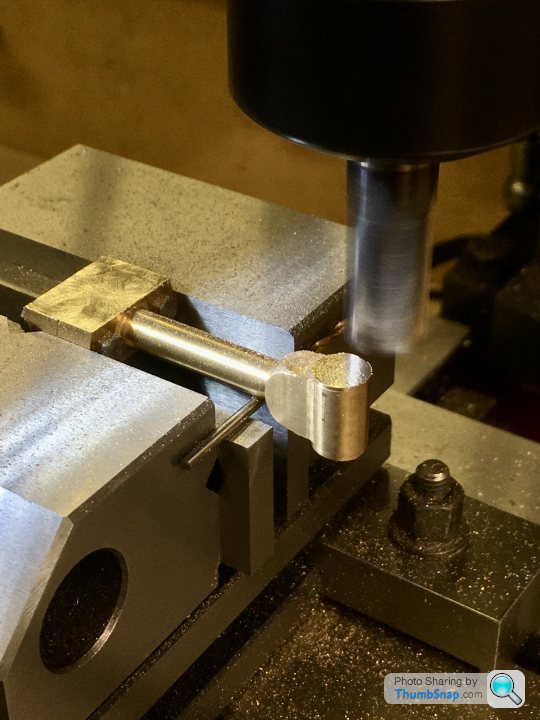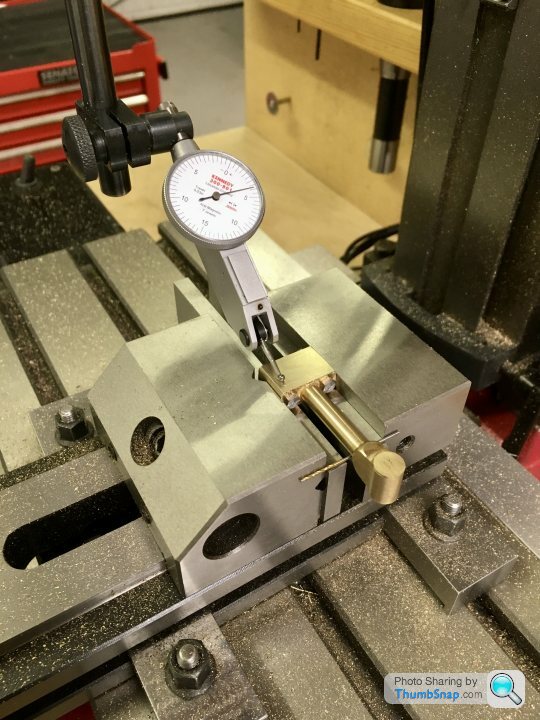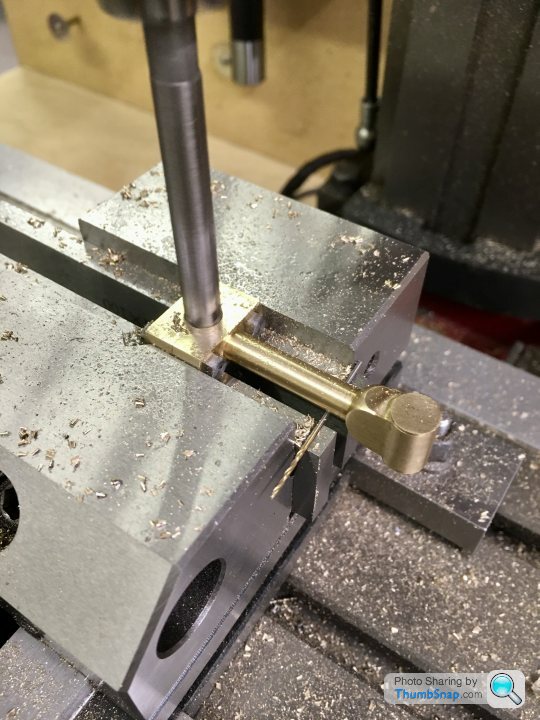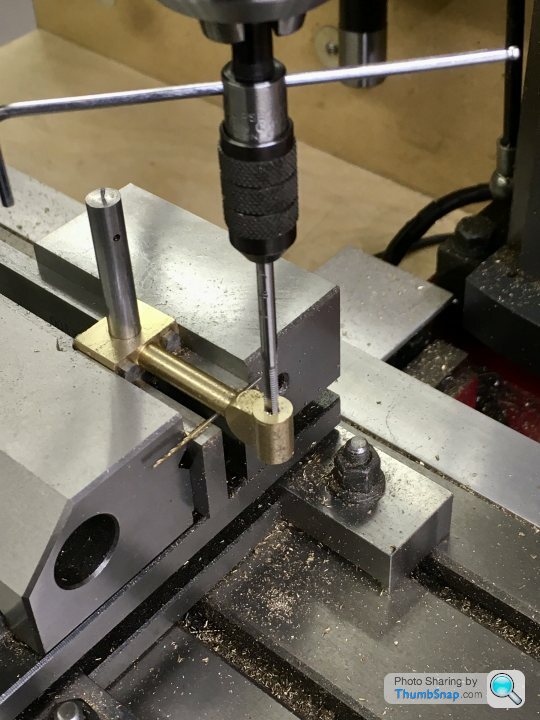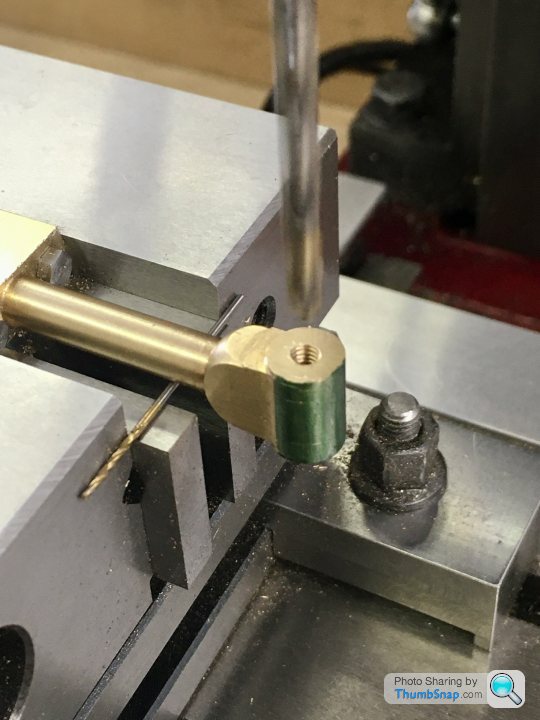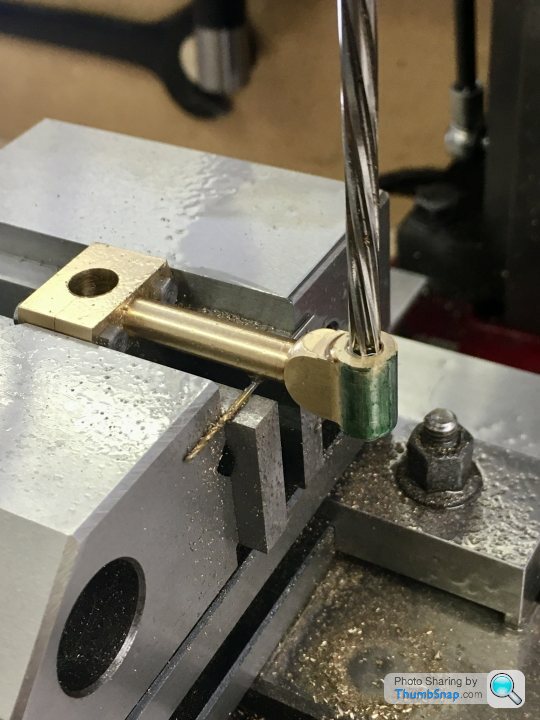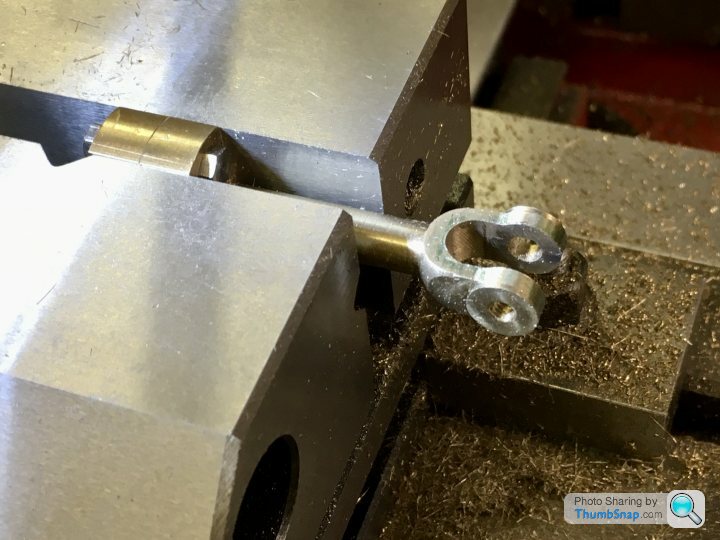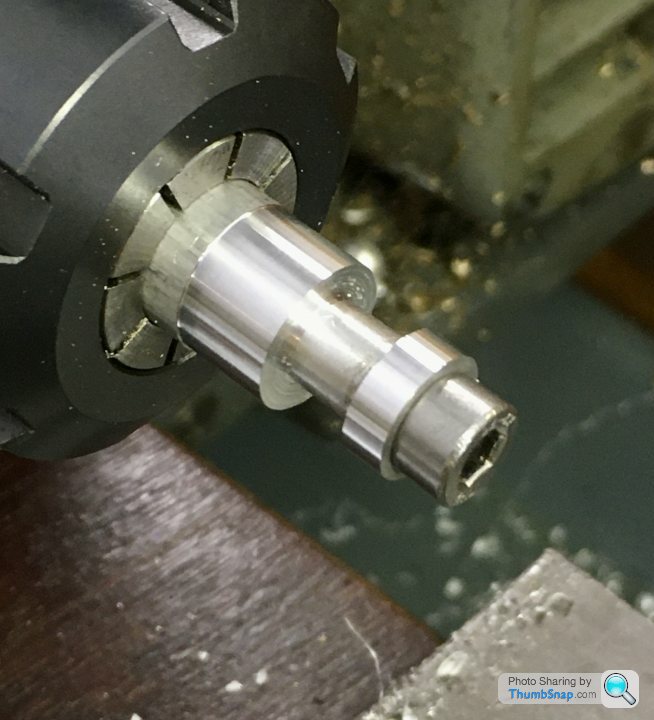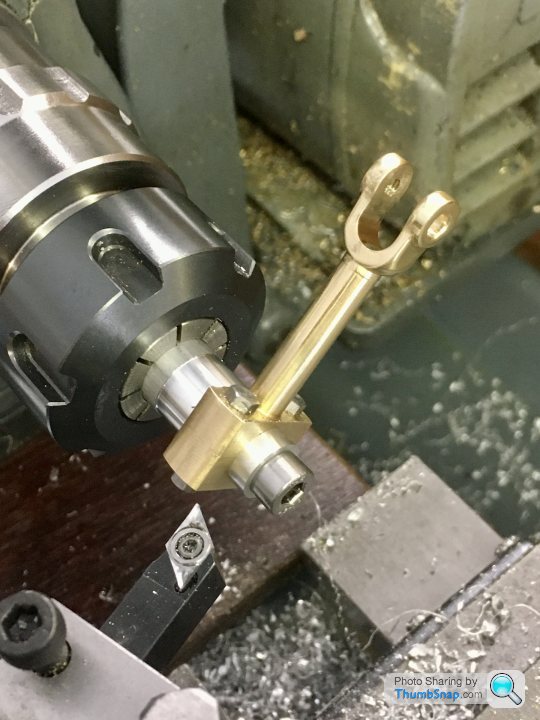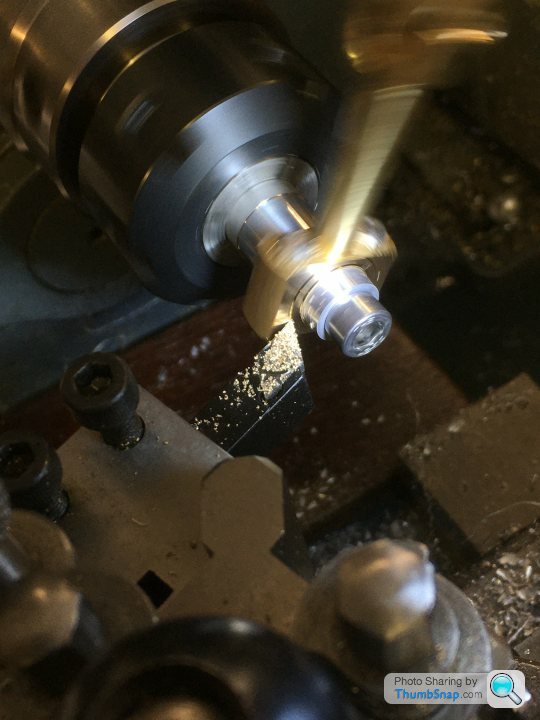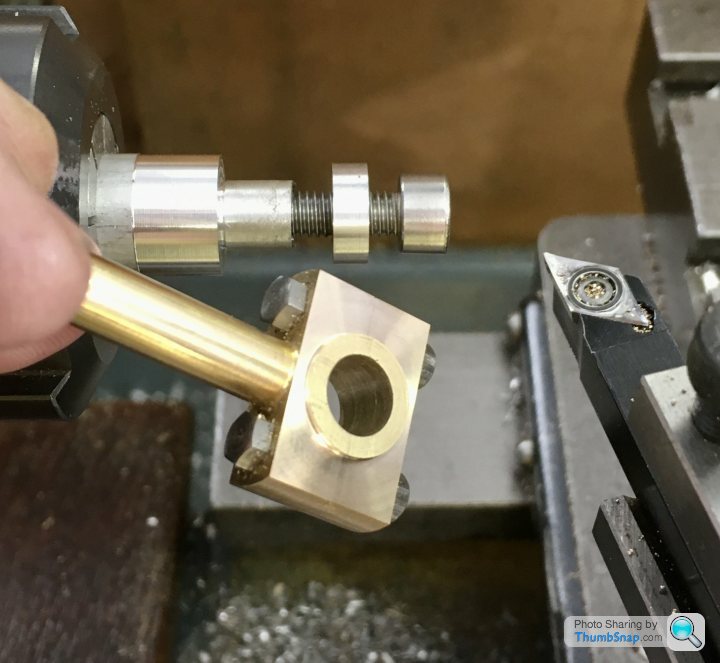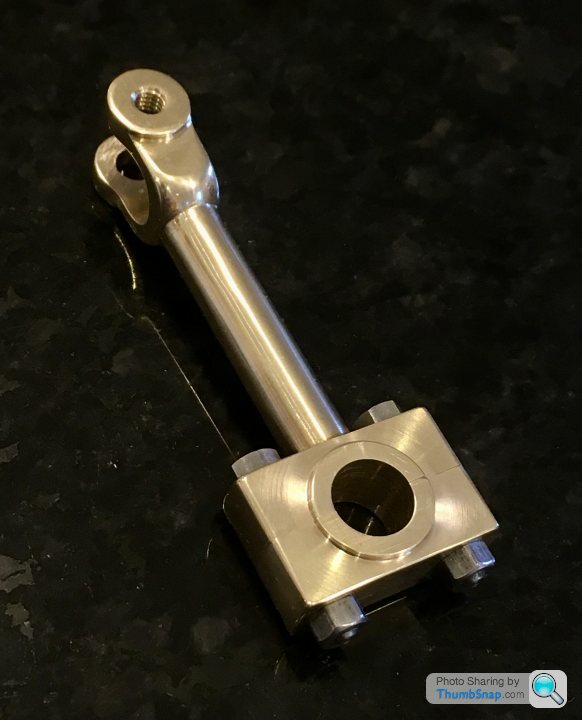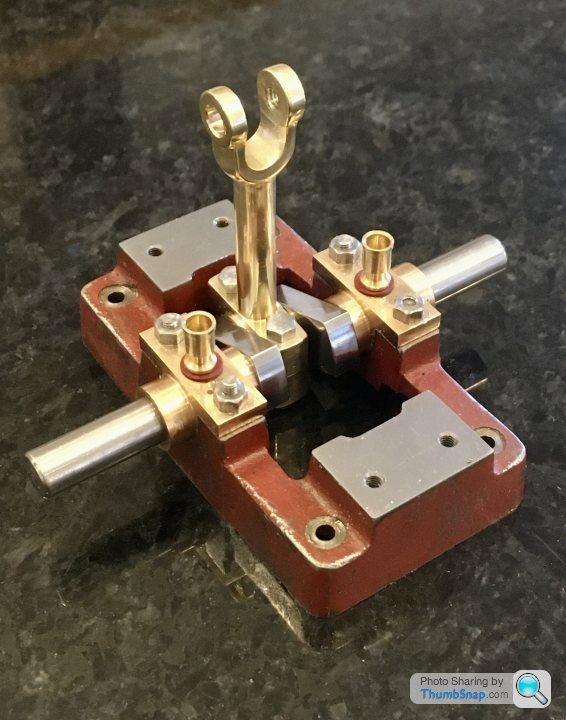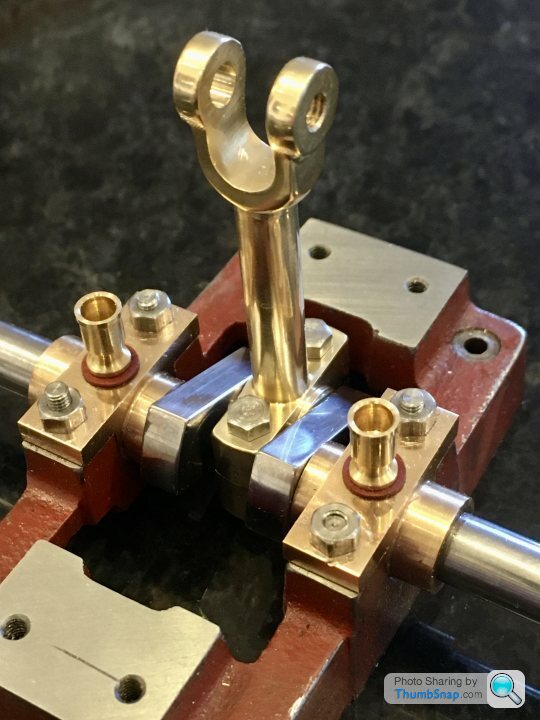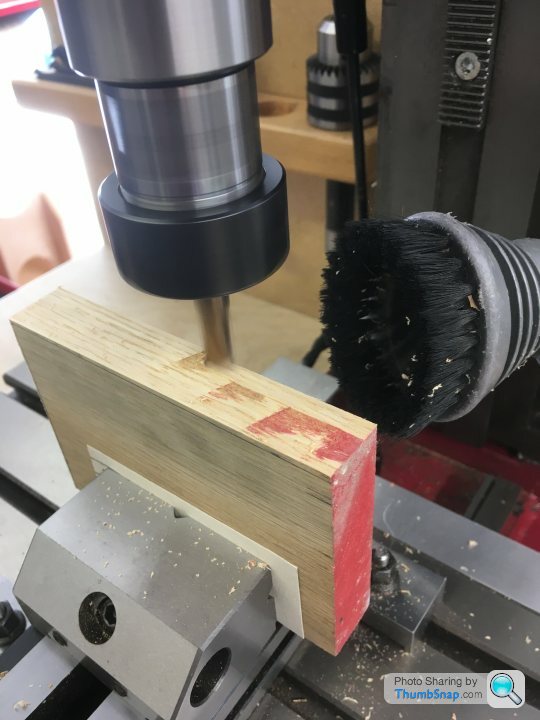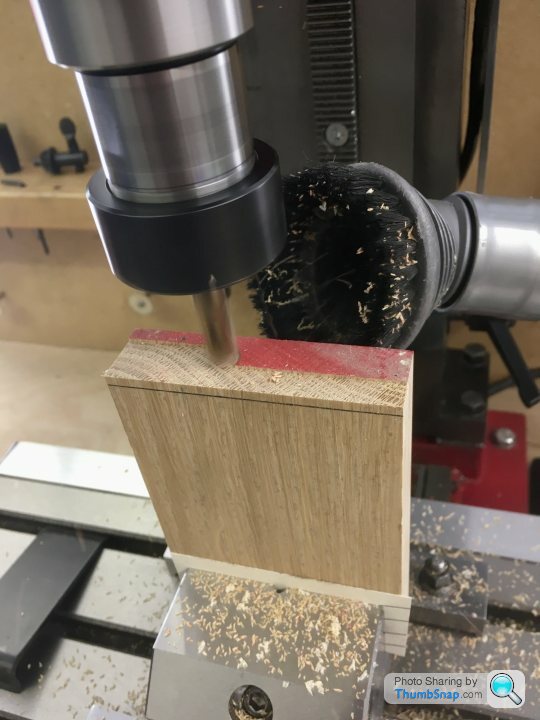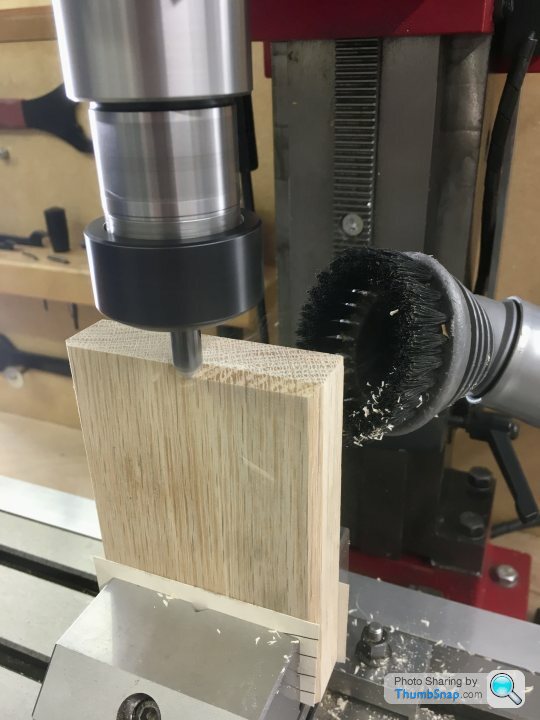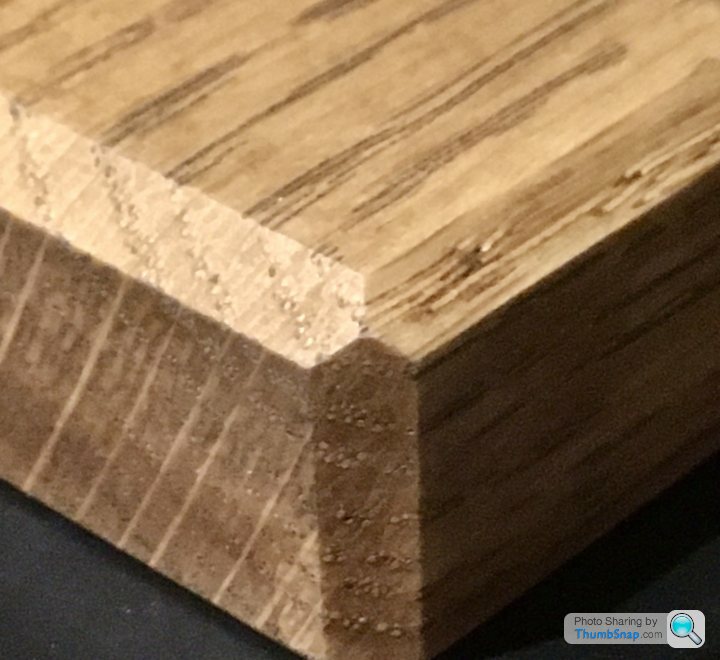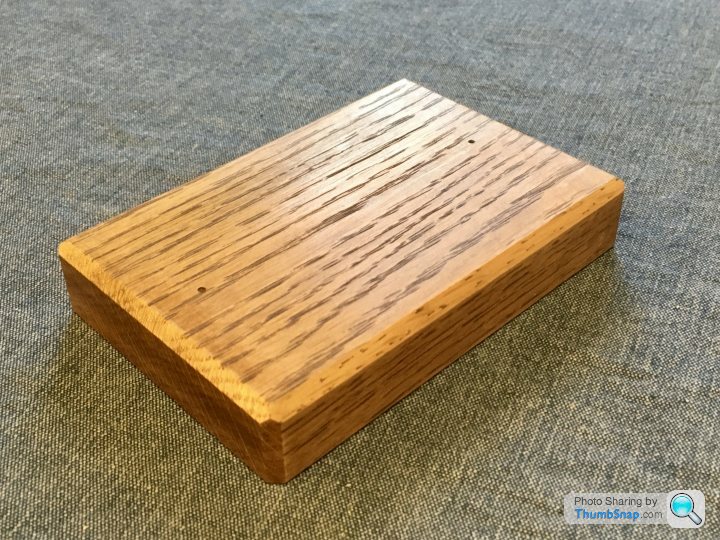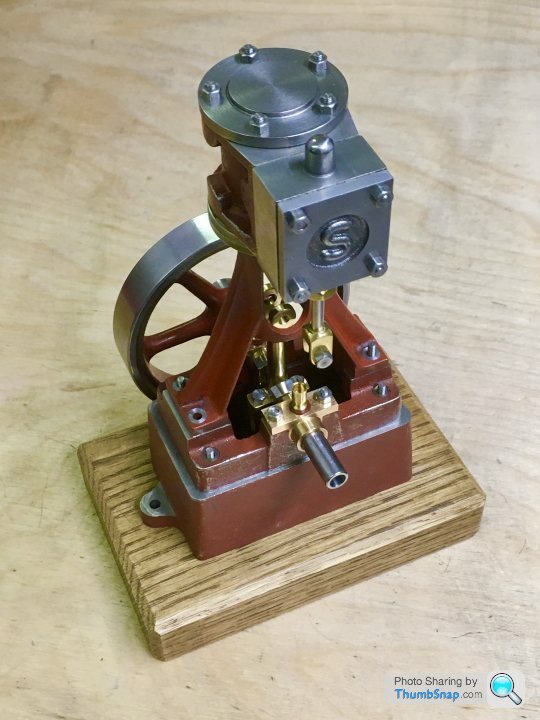Connecting rod next. I believe it used to be supplied as a stamping, but now it’s a rough-machined item:

For some reason, it’s got a spigot on the back. I used it to locate in the mill collet, and then lowered into the vice in preparation for drilling the bolt holes. I clocked it up beforehand to check it was straight; it wasn’t bad, a few thou runout:

And again in the vice to check all the accessible surfaces were square:

I then used the edge finder to centre the spindle:


Then co-ordinate drilled the holes. I used a smaller drill than specified in order to get a tighter fit:

Then removed from the vice, marked out the split line, and the-fitted in the vice to check its level:

Then used the thin slitting saw to cut the lower block:



Then cleaned up the mating faces with an end mill:

And removed the spigot from the lower block and milled to the correct depth:

Bolted together and Loctited, the sides were milled to the right thickness to fit between the crank webs:


And the small end faces. A bit of vibration here, but I couldn’t think how else to hold it to drill bothe ends in the same setup:

Then double checked the main faces for flatness in two planes:

Then got the centre point for the crank pin hole bang on the cut line:

Drilled and reamed:

Then on to the small end. Through drilled and tapping to 5BA:

And in the same setup, drilled and reamed half way to pin size (removing the upper threads in the process):


Next job was to measure and open out the forked end by milling:


Final job was to machine the cheek bosses. I made a simple fixture out of aluminium (thanks for the idea Jason). The end boss is a clamp and a diameter reference:





So after a quick polish, that’s another bit done:



On assembly, there was a slight resistance to turning in a couple of spots, but working with a drop of light oil soon had it working smoothly with no side play at all:


The sides of the bearing block are very close to the sole plate, but are in fact under-sized to the drawing. The slider stamping the the forked end located around is also undersized slightly as supplied. Bit of a shame Because I could have narrowed the fork. It’s only a slight bit of play though, and I may well need it once assembled…
Dr_GMJN.


